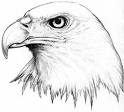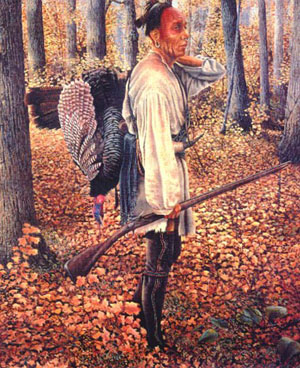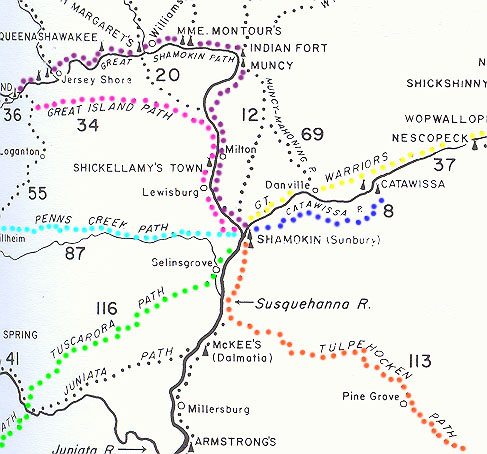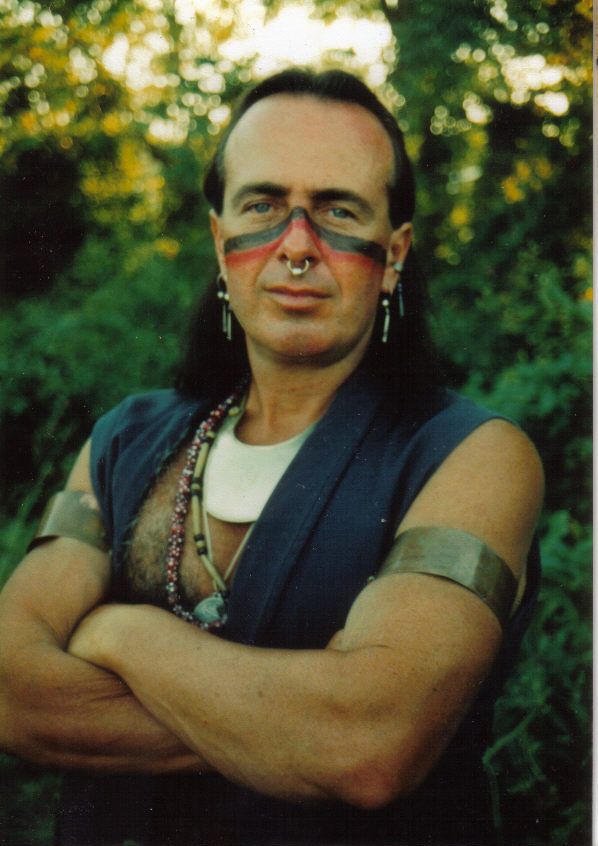A History
/SusquehannaRiver.jpg)

| Main Page |
| Time Line |
| History |
| Indian Trails and Shamokin (7000 BC-1763 AD) |
| Fort Augusta (1756-1792) |
| Founding of Sunbury (1772-1830) |
| Railroad and Canal Era (1830-1912) |
| Contemporary (1912-present) |
| Maps |
| Indian Trails and Shamokin (7000 BC-1763 AD) |
| Fort Augusta (1756-1792) |
| Founding of Sunbury (1772-1830) |
| Railroad and Canal Era (1830-1912) |
| Contemporary (1912-present) |
| Special Topics |
| Related Links |
| Works Cited |
| Little is known about Pennsylvania’s first human occupants. As early as 7000 BC, when the great Wisconsin glacier covered New York State, Pennsylvania was covered with arctic plants and spruce-fir forests. Mastodon, musk ox and caribou grazed the Susquehanna River Valley and undoubtedly provided food for its human inhabitants. Known to archeologists as the Paleo-Indians, we can only speculate what their physical appearance, language, religion, and social activity was like by studying the tools that they used. It seems that roughly around the time of Christ these hunters and gatherers responded to the retreating glacier by moved northward. | ||||
|
|
|||
When John Smith arrived in 1608 he described the Susquehannocks as wearing bear and wolf skins, and carrying bows, arrows and clubs. In their most typical form, the Susquehannocks were farmers who grew large crops of corn, beans and squash along the fertile flood plains of the river. They also worked as gatherers and hunters, collecting wild-plant foods, seeds, nuts, insects, reptiles, mollusks, fish, birds, and mammals. Tribes lived in fortified cities, which were composed of sixty to eighty foot long, bark-covered longhouses and several families, who were all related to one another via matrilineal lines of descent, lived in each long house. Like many Native Americans, the Susquehannock social organization was centered almost entirely about female ancestry. Treaties between the Susquehannocks and the whites nearly always recorded nation or family affiliations via the mother’s ancestors. |
||||
|
|||
.  |
Sunbury's Environment |
||
The Bucknell Environmental Center▪ 835 Fraternity Road ▪ Bucknell University ▪ Lewisburg ▪ PA 17837▪ (570) 577-1490


